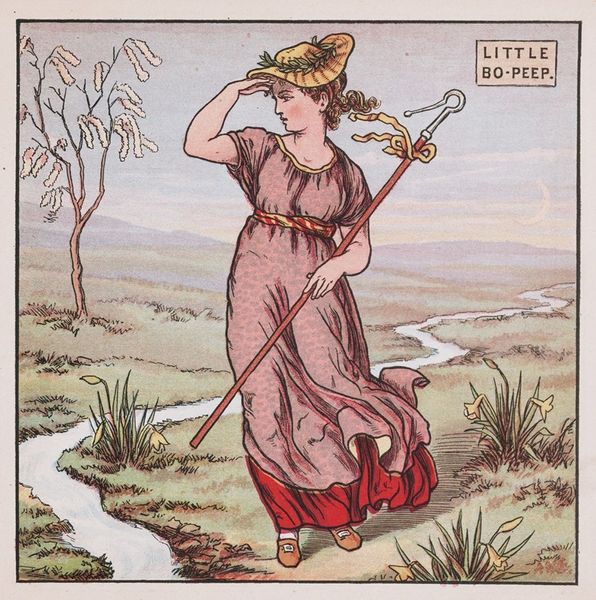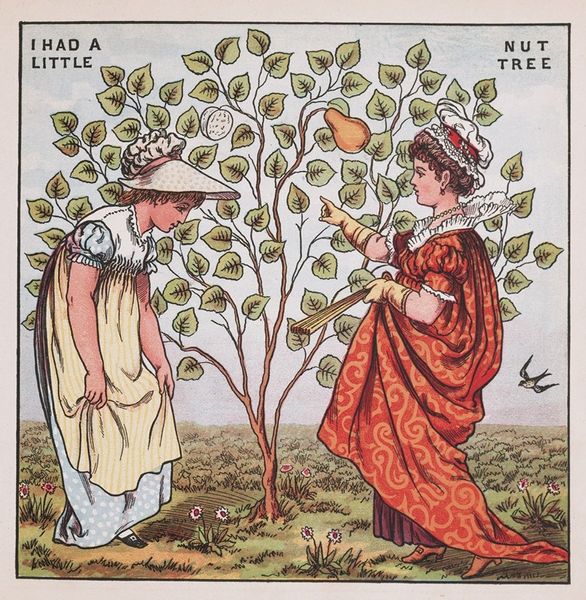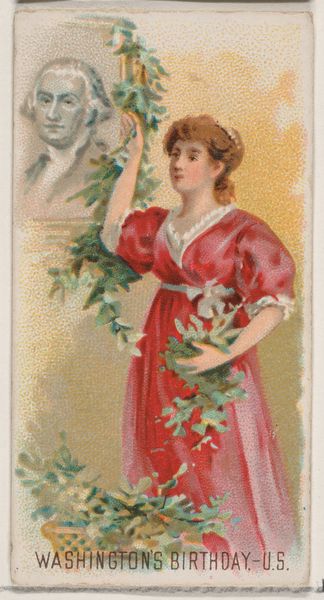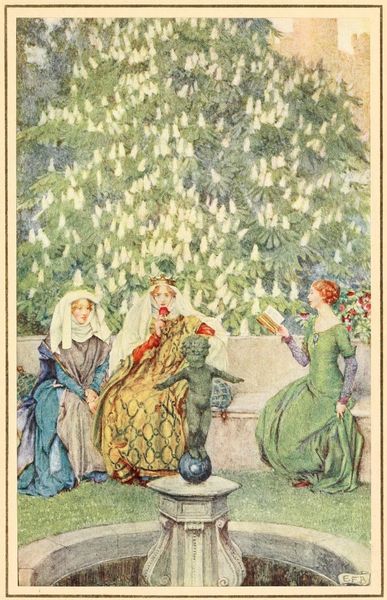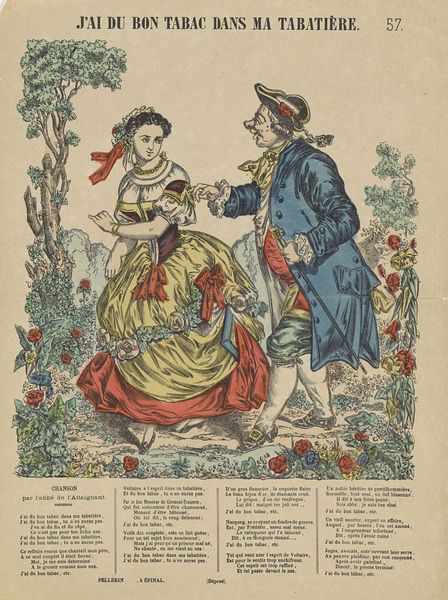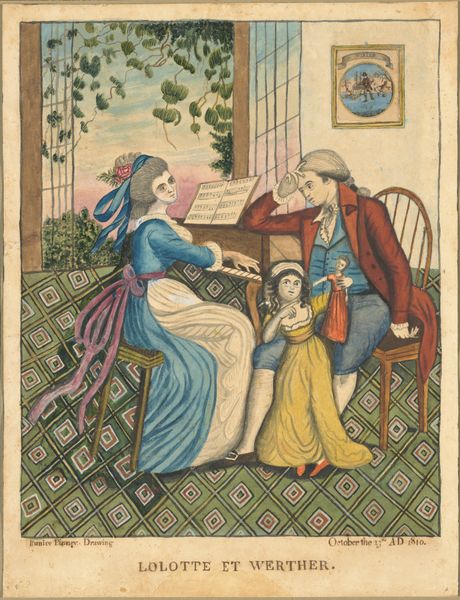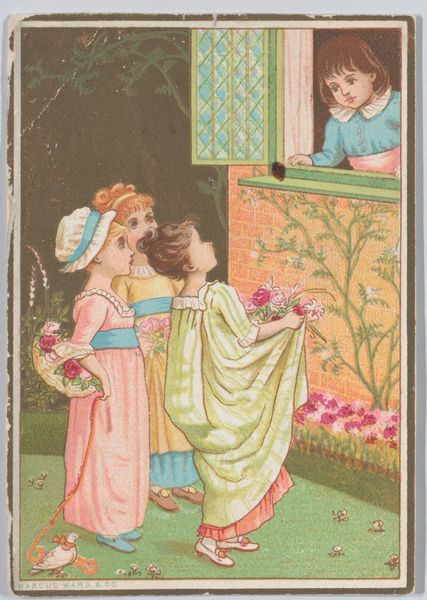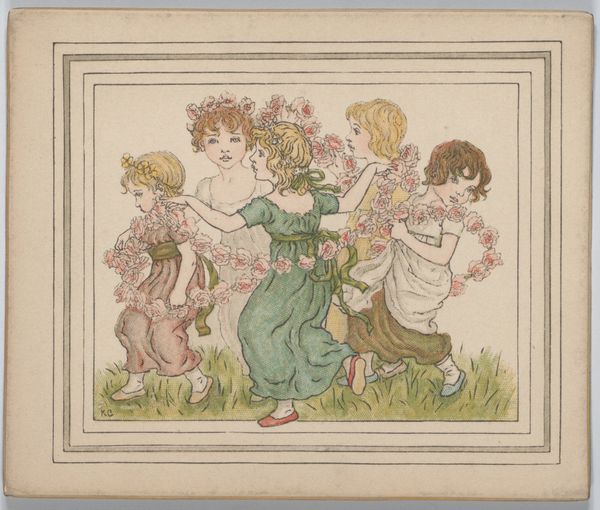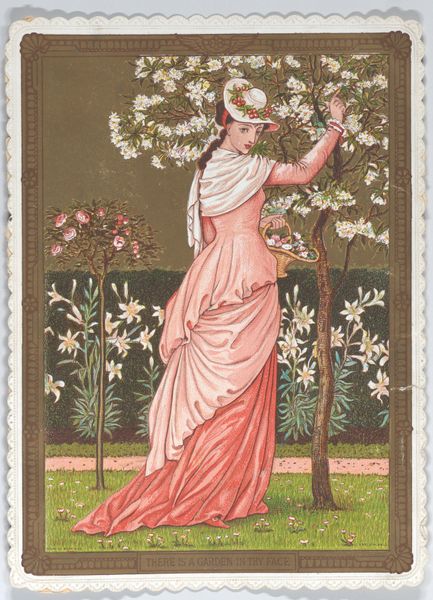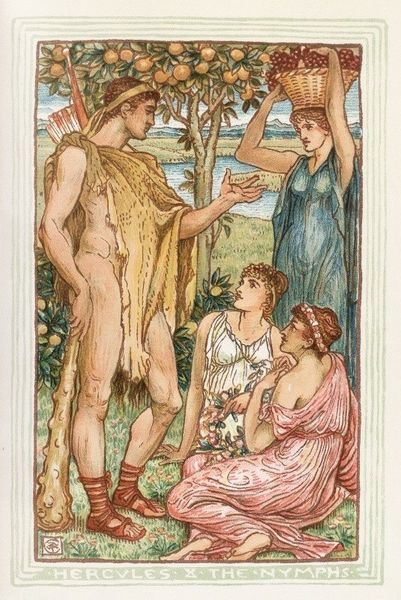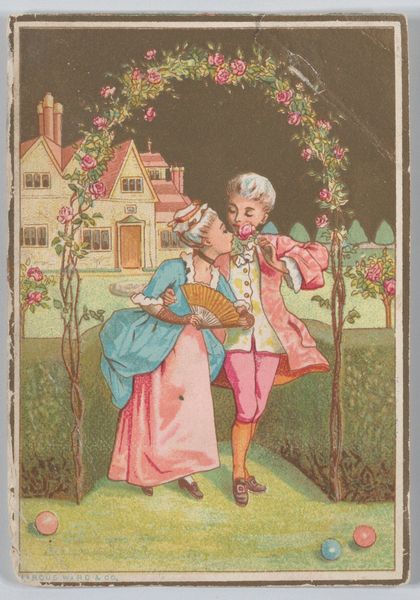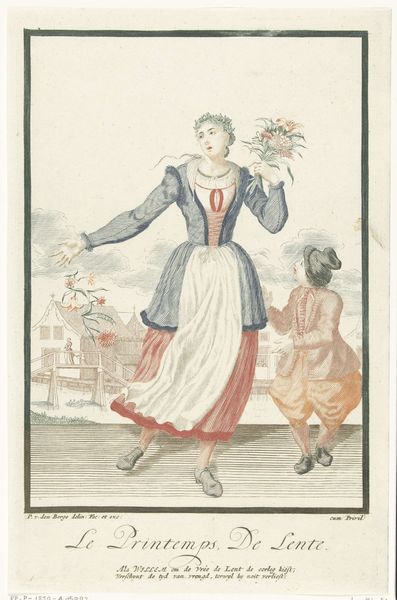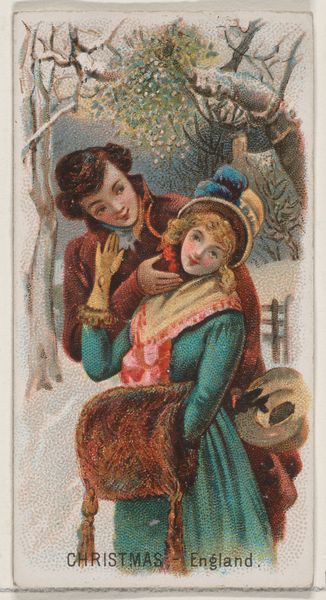
Copyright: Public Domain: Artvee
Editor: This is Walter Crane's "The Mulberry Bush," created in 1877. It has this very storybook feel to it, a little whimsical. I'm curious – focusing purely on its structure and design, how would you interpret the visual relationships at play here? Curator: Note how the figures form a closed circular composition, echoing the form of the mulberry bush itself. The colour palette is quite restrained, predominantly using shades of red, brown, and touches of green which unifies the pictorial space. The bold outline gives definition to each of the figures and flattens the perspective creating a strong visual rhythm. The placement of the lettering further enhances this sense of design, seamlessly integrating with the image. How does this strong linearity inform your reading of the piece? Editor: The flatness definitely creates a decorative quality. The outlines really define the shapes. The women almost seem like patterns in themselves, not realistic figures so much. It feels like I'm looking at a stylized tapestry or a very high-end greeting card. Curator: Precisely! It transcends mere representation, transforming into a visually balanced arrangement of forms and colours. Do you observe a visual hierarchy or a point of emphasis within this structured framework? Editor: Maybe the tree itself because the circle of the women centres around it? Or is it meant to be egalitarian where everything shares equal visual importance? Curator: The composition could be considered self-referential – a structural celebration of form. This analysis moves beyond historical context or intended message and explores what constitutes a pleasing and carefully arranged visual work. Editor: I see what you mean, thinking about how everything connects as a whole helps understand the beauty beyond any symbolic value. Curator: Indeed. Approaching the image from a formalist point of view provides fresh insight.
Comments
No comments
Be the first to comment and join the conversation on the ultimate creative platform.

